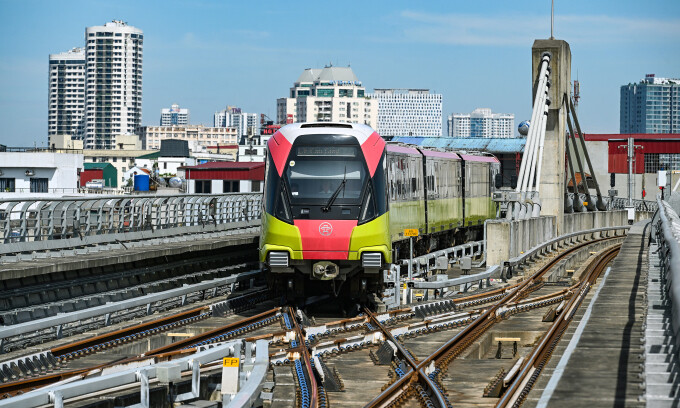
HANOI – Vietnam's Ministry of Transport has submitted a proposal to the government, outlining specific and special mechanisms and policies aimed at accelerating the development of urban railway systems in Hanoi and Ho Chi Minh City. The ministry is seeking the National Assembly's approval for a resolution that would pave the way for modern and sustainable investment in these crucial infrastructure projects.
Transport Minister Trần Hồng Minh emphasized the global trend of prioritizing urban railway development to address congestion, pollution, and traffic accidents. He stated that now is the opportune time for Vietnam to invest in these systems, given the growing populations and rising per capita incomes in Hanoi and Ho Chi Minh City. In 2023, Hanoi's population reached 8.5 million with a per capita income of US$5,900, while Ho Chi Minh City had 9.5 million residents and a per capita income of $6,700.
Both cities aim to substantially complete their urban railway networks by 2035, aligning with national objectives. The ambitious plan envisions 17 urban railway routes and sections, totaling approximately 752km, in operation by 2035. This network is projected to handle 35-50% of the public passenger transport market share. Further expansion is planned by 2045, with an additional seven routes and four sections (355km) expected to be operational, increasing the market share to 50-60%.
The Ministry of Transport estimates the total funding requirement for these projects to be over VNĐ3 quadrillion, including VNĐ424.8 trillion from the state budget and the remainder from the city budgets.
The proposal outlines six key areas for special mechanisms and policies: capital mobilization, investment procedures, Transit Oriented Development (TOD) model, railway industry development, technology transfer, and training.
To facilitate funding, the proposal suggests flexible mechanisms that allow the two cities to proactively mobilize capital from various sources, including additional revenue streams, cost savings, and Official Development Assistance (ODA) capital, streamlining the project proposal process.
A significant aspect of the proposal is the integration of urban development planning with the TOD model, which emphasizes dense, walkable, mixed-use development around transit stations.
The draft resolution also aims to bolster the domestic railway industry by promoting standardized technical norms and implementing preferential policies for technology transfer and human resource training. This will enable Vietnamese companies to participate more actively in the urban railway project supply chain.
The government is expected to submit the resolution to the National Assembly for approval this month. The successful implementation of these special policies could significantly transform the urban transportation landscape in Vietnam's two largest cities, paving the way for more efficient, sustainable, and livable urban environments.
[Copyright (c) Global Economic Times. All Rights Reserved.]




























